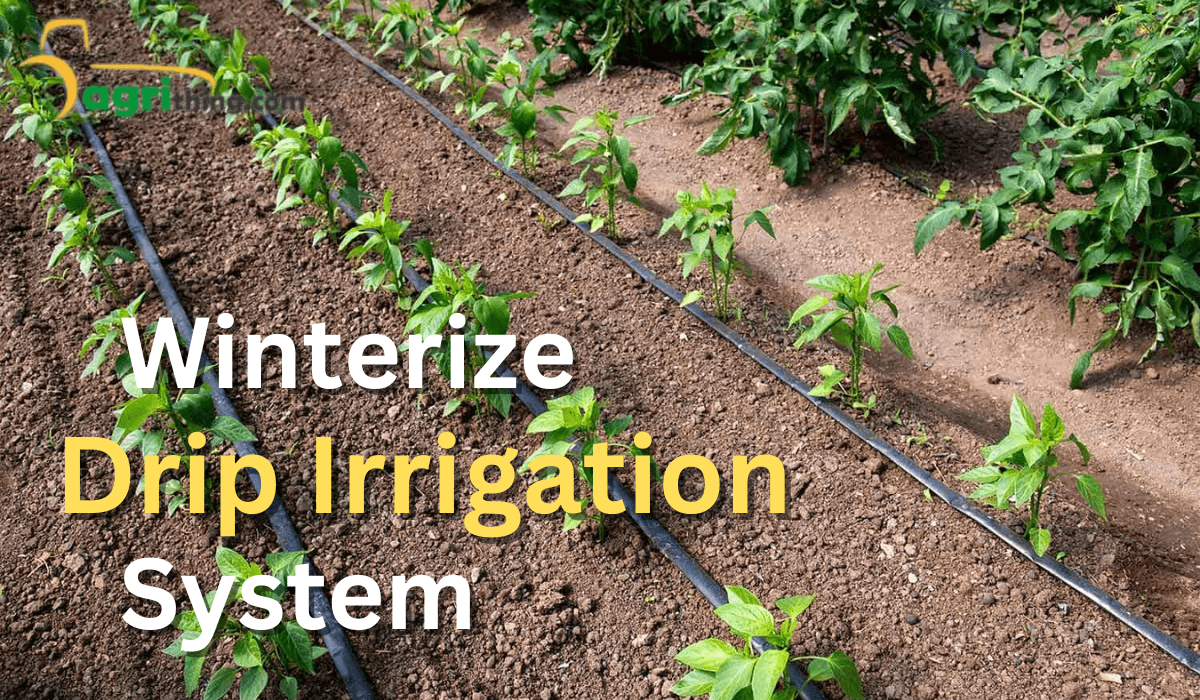Maximize Growth: Drip Irrigation System in Pakistan Complete Guide
Hydroponics is an excellent way to grow plants using water instead of soil. Drip irrigation is a unique method of providing water to the plants. It’s like giving them a little drink through tiny tubes. This article will provide more information about the Drip Irrigation system in Pakistan and how it contributes to the growth of plants in hydroponic systems. You will also learn how to establish and maintain a drop-by-drop irrigation system for your hydroponic garden.
Table of Contents
What is Hydroponic?
Have you ever heard of growing plants without using soil? It’s called hydroponics, and it’s fantastic! An essential aspect of hydroponics in Pakistan is providing plants with water and nutrients uniquely through a drip irrigation system. It’s like giving them a drink directly to their roots. This article will teach you about the importance of the drip irrigation system in Pakistan and how it helps plants grow strong and healthy.
What is Drip Irrigation?
Do you know how plants are usually watered in Pakistan? Well, there’s a unique method called the drip irrigation system in Pakistan. Instead of flooding the entire area, water is delivered slowly and directly to the plants’ roots. It’s like giving them a little sip right where they need it. Trickle irrigation in Pakistan saves water, keeps plants healthy, and enables them to absorb all the necessary nutrients for growth.
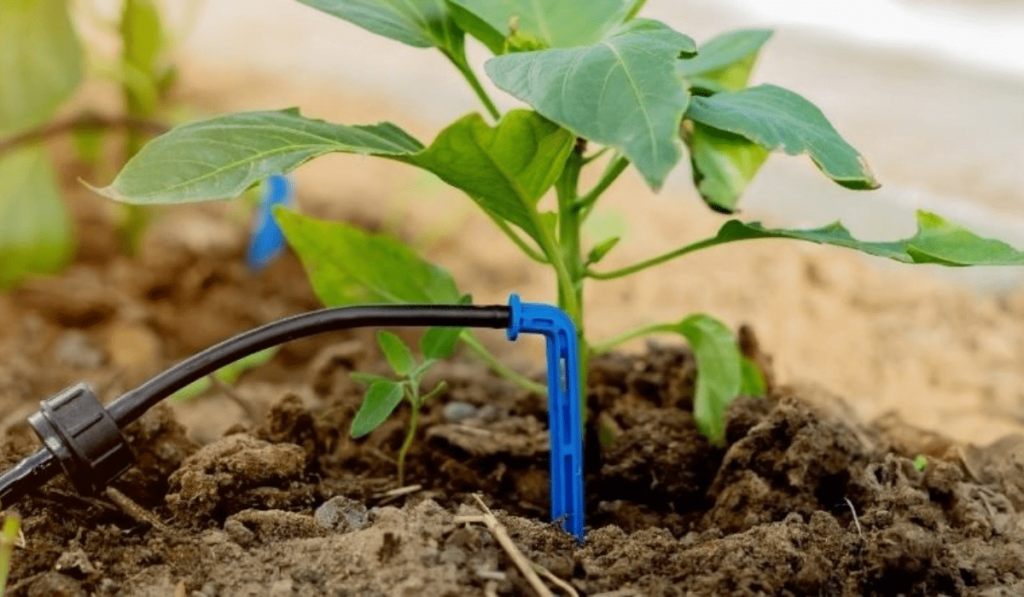
Components of Drip Irrigation system
A Drop-by-drop irrigation system consists of the following components:
Water Source: A reliable water supply, such as a reservoir or water connection, is required for a Micro-irrigation system.
Pump: A pump may be necessary for larger setups to maintain proper water pressure and flow rate.
Filters: Filters remove debris, sediment, and other impurities that could clog the drip emitters.
Mainline: The mainline carries water from the source to the irrigation zone.
Distribution Lines: These lines deliver water from the mainline to the plants, often using polyethylene tubing.
Emitters: Emitters are devices that control the flow rate and distribute water to individual plants.
Timer or Controller: A timer or controller automates the irrigation schedule and ensures consistent watering.
Variations of the Drip System:
Depending on how excess water is managed, drip systems have two main variations. These variations can be implemented in various configurations to suit specific circumstances.
Recirculating/Recovery Systems:
In drip hydroponic systems, only some of the water added to the growing medium is absorbed by the plant roots. There are two main variants of drip irrigation system in Pakistan based on how they handle this excess water. One variant is the recovery system, commonly used in smaller, home-based setups.
In a recovery system, the excess water in the growing medium can flow back into the reservoir. This approach is known for its efficient use of water and nutrients. However, it also has some disadvantages.
In the context of drip irrigation systems in Pakistan, one drawback is that the wastewater flowing back to the reservoir can affect the pH level of the water. Hence, regular maintenance is necessary for recovery systems. In Pakistan’s drip irrigation system, it is important to periodically check the reservoir water to ensure optimal pH and nutrient levels. Fortunately, this task is easier and more cost-effective, especially in smaller drip systems implemented in Pakistan.
Non-Recovery/Non-Circulating System:
In this type of drip system,
Known as the waste or non-recovery system, any extra water is discarded. Usually, wasting water and nutrients is not desirable, but drip systems are already highly efficient in water conservation, so the amount of waste is manageable.
Large farms and gardens often utilize this system. The individuals managing extensive plantations can use advanced timers to control the water supply, saving time precisely.
There’s another reason why the drip irrigation system in Pakistan is excellent for large farms. It requires less maintenance for the water tank. There’s no need to worry about recycled water altering the tank’s acidity level or nutrient composition.
In summary, the waste system is suitable for large farms because it helps save water and simplifies water tank maintenance.
Best plants for a drip irrigation system
A drip system is highly beneficial for cultivating various plants and herbs, providing precise control over water and nutrient distribution. It is compatible with different growing media, further expanding its versatility.
Here is a list of plants that thrive in a hydroponic drip system:
- Lettuce
- Leeks
- Onions
- Melons
- Peas
- Tomatoes
- Radishes
- Cucumbers
- Strawberries
- Zucchini
- Pumpkins
Drip systems are particularly advantageous for larger plants that require substantial amounts of moisture. By using a slow watering method, these plants can receive adequate hydration and nutrition within a drip setup.
When implementing a drip irrigation system in Pakistan, using a slow-draining medium to achieve optimal outcomes is advisable. The most popular options in this category, such as Rockwool, peat moss, and coconut coir, are commonly used. However, drip irrigation system in Pakistan, alternative media like clay pellets, perlite, and gravel can also be employed successfully for effective plant growth.
Drip Irrigation in Hydroponic Systems
Hydroponics and the Drip Irrigation System in Pakistan make a great team because they work together well. Trickle irrigation helps plants in hydroponic systems in Pakistan grow better and stay healthy. It’s like giving the plants in the drip irrigation system in Pakistan exactly the right amount of water they need, and it helps them grow faster and more robust.
Advantages of Drip Irrigation in Hydroponics
Nutrient Delivery: Drop-by-drop irrigation systems are like magic tubes that deliver water and particular nutrients to the plant’s roots. This makes the plants happy and healthy, helping them grow strong and absorb all the good stuff they need to grow big and strong.
PH and EC Management:
Micro-irrigation in the drip irrigation system in Pakistan lets us quickly adjust the water’s pH and electrical conductivity levels to make it suitable for plants. This capability helps create the perfect environment for the plants in Pakistan’s drip irrigation system to grow happily and healthily. It’s like giving them a cozy home in Pakistan with just the right conditions!
Reduced Water Usage:
Did you know that the drip irrigation system in Pakistan, especially in hydroponics, helps save a lot of water? It’s much better than other systems that use excessive amounts of water. With micro-irrigation, we can provide the plants in Pakistan’s drip irrigation system with the precise amount of water they need to stay hydrated and healthy. It’s like a unique water-saving superpower.
Considerations for Drip Irrigation in Hydroponics
While Drop-by-drop irrigation offers numerous advantages, specific considerations are essential for successful implementation in hydroponic systems.
System Design:
When setting up our plant system, we have to think about important things like how much space each plant needs, where to put the water tubes, and what each type of plant likes. This helps us ensure that every plant gets what it needs to grow strong and happy!
Nutrient Delivery:
We must be careful and ensure our plant food has all the right stuff in it. Each plant is like a special friend and needs different things to grow well. So, we mix up exceptional plant food with exactly what each plant needs. This helps them stay healthy and grow super tall!
Regular Maintenance:
We must also take care of our drip irrigation system in Pakistan and the plant water system. We have to clean the little parts of the drip irrigation system in Pakistan that give water to the plants and ensure they’re not blocked. This way, the water can always reach the plants in the drip irrigation system in Pakistan, and they’ll be happy and hydrated!
Setting up a Drip Irrigation System for Hydroponics
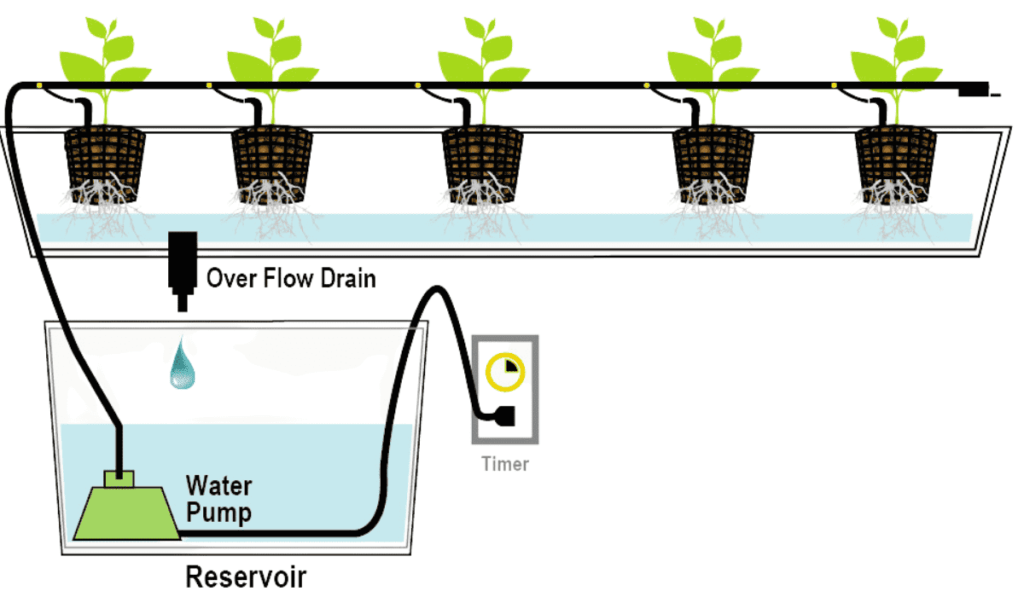

To set up a drip irrigation system in Pakistan for hydroponics, several steps should be followed to ensure an efficient and effective setup.
Choosing the Right Drip Irrigation System
When selecting a drip irrigation system in Pakistan, consider the following factors:
Flow Rate and Pressure:
When picking the special water sprinklers for your plant system, choose the ones that match how much water you want to give and how strong the water should come out. It’s like finding the perfect sprinkler for your garden.
Emitter Spacing:
Did you know that each type of plant likes to have its own space to grow? It’s true! When we set up our plant water system, we must choose suitable sprinklers and tubes that match how much space each plant needs.
Durability:
We must choose solid and strict parts when assembling our plant water system. These parts can handle challenging situations in our unique plant home. This way, our plant system will stay strong and keep working well, no matter what!
Designing the System Layout
Designing an appropriate layout is essential for optimizing water distribution and minimizing wastage. Consider the following aspects:
Plant Spacing:
Determine the spacing between plants and adjust the emitter and distribution line placement accordingly.
System Zoning:
Divide the hydroponic setup into irrigation zones based on plant varieties, growth stages, or specific water requirements.
Water Source Location:
Place the water source and pump near the irrigation system for easy access and maintenance.
Installing and Maintaining the System
Proper installation and regular maintenance are crucial for the long-term success of a drip irrigation system.
Installation:
Follow manufacturer guidelines and ensure proper connection of all components, including filters, mainlines, distribution lines, and emitters.
Flushing and Cleaning:
Regularly flush the system to prevent clogging and clean filters and emitters to maintain optimal water flow.
Periodic Inspections:
Check for leaks, damaged components, or any signs of reduced water flow. Address issues promptly to avoid crop damage.
Best Practices for Drip Irrigation in Hydroponics
To maximize the benefits of Micro-irrigation in hydroponics, following best practices for efficient water and nutrient management is essential.
Monitoring and Adjusting Irrigation Levels
Regularly monitor soil moisture levels and adjust the irrigation schedule accordingly. Factors such as plant growth stage, temperature, and humidity influence water requirements.
Proper Water Filtration
Install and maintain appropriate filters to remove waste, deposits, and other impurities that can clog emitters. Clean or replace filters as needed to ensure uninterrupted water flow.
Preventing Clogging and Algae Growth
We must take some special steps to keep our drip irrigation system in Pakistan healthy and clean. First, we use filters to catch unpleasant things that could stop our system. Then, we flush out the system with water regularly to keep it fresh and clean. We also treat the water with great stuff to ensure no icky algae grows. These steps help our plants stay happy, and our water system works smoothly.
Pros and Cons of Drip Irrigation for Hydroponic Systems
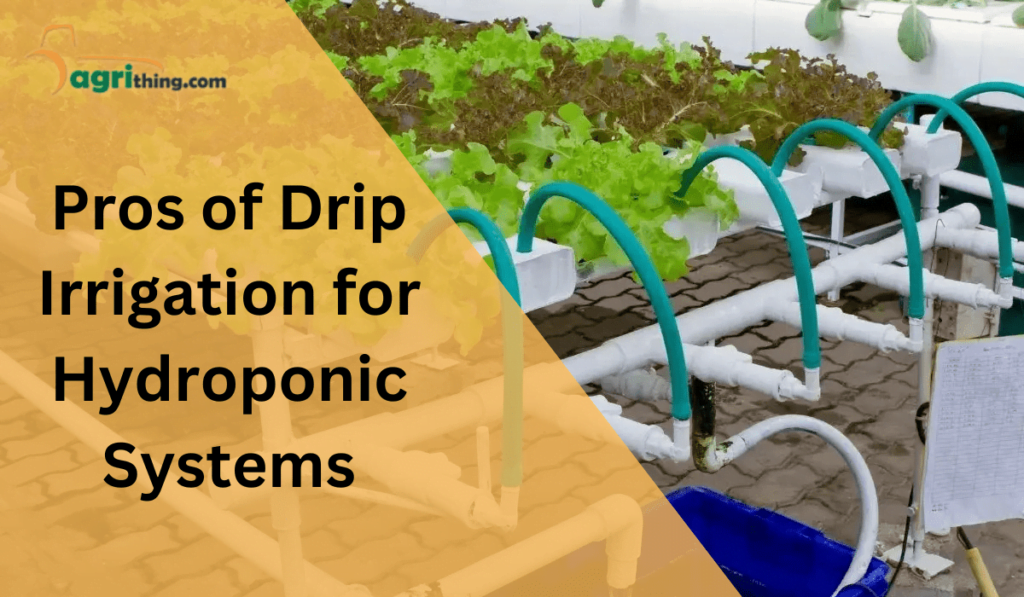
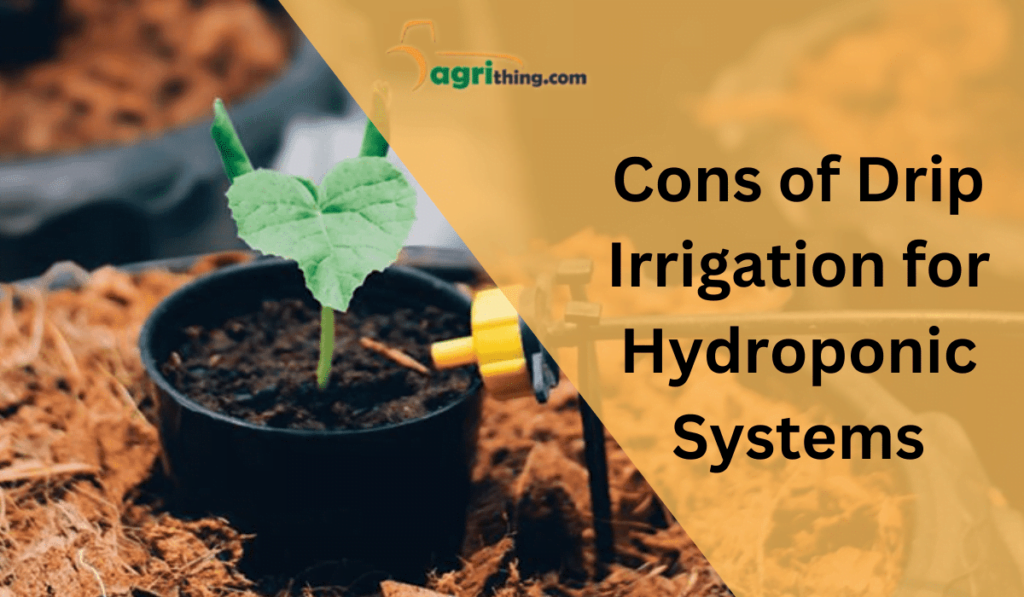
| Pros | Cons |
|---|---|
| Precise water and nutrient delivery to plants | Initial setup costs can be higher than other systems |
| Efficient water usage, reducing waste | Requires regular maintenance and monitoring |
| Reduced risk of overwatering and waterlogging | Potential clogging of drip emitters |
| Lower labor requirements for watering | Requires a reliable water source |
| Flexibility in adjusting water and nutrient delivery | Sensitivity to water quality and pH |
| Minimizes the risk of foliar diseases | Requires proper filtration to prevent clogs |
| Suitable for a wide range of plant types and sizes | Potential uneven distribution of water and nutrients |
| Can be automated for consistent and precise irrigation | Not suitable for certain crop varieties |
Conclusion
Drip irrigation System in Pakistan is a superb way to water plants in a specific plant home. It delivers clean water and nutrients right where the plants need them and helps save water too! Using Micro-irrigation makes plants grow well and saves resources. If we learn about the essential parts and factors to consider, we can use the drip irrigation system in Pakistan in our plant home and experience all its benefits.
Get your 8/12 PVC Branch Pipe Micro Spray for Drip Irrigation, Garden Irrigation, and more at Agricomplex. Don’t wait, shop now!
Drip Irrigation
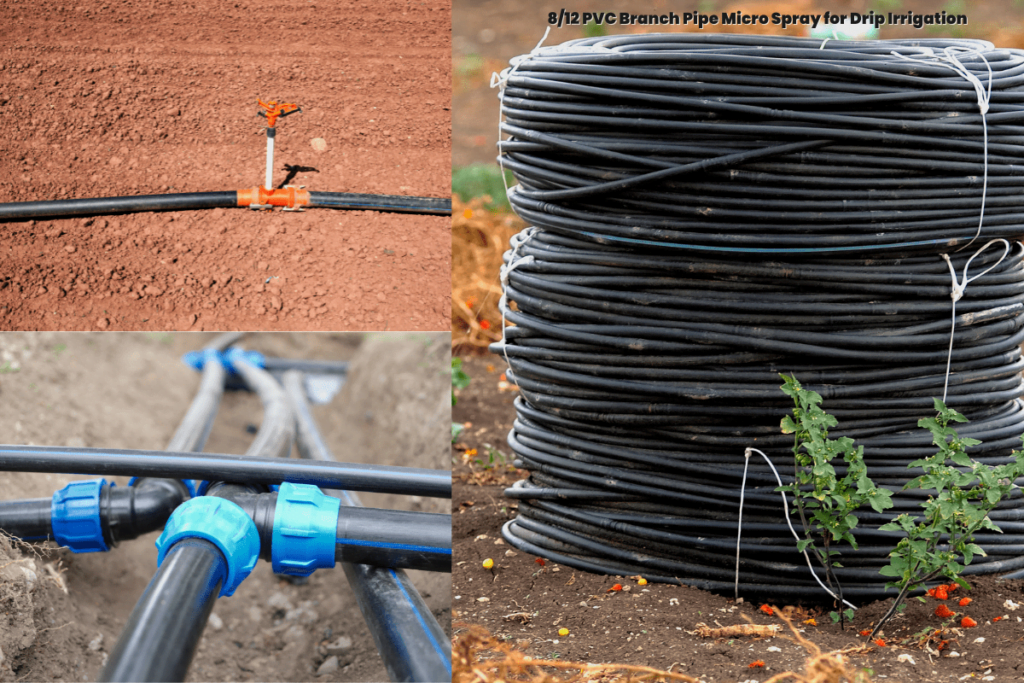
Frequently Asked Questions (FAQ’s)
Can drip irrigation be used for all types of plants in hydroponics?
Customization of Micro-irrigation systems is essential to meet the specific requirements of different plant varieties in hydroponics.
How often should I water my hydroponic plants using Drop-by-drop irrigation?
Monitor soil moisture levels and adapt watering frequency based on plant species, growth stage, and environmental conditions.
Is drip irrigation expensive to set up in hydroponics?
The initial investment in a Micro-irrigation system for hydroponics may vary, but its long-term water and resource-saving advantages surpass the costs.
Can I reuse the nutrient solution with drip irrigation in hydroponics?
Regular monitoring and adjustment of nutrient levels are essential for maintaining optimal plant nutrition through recirculating and reusing nutrient solutions in Micro-irrigation.
Can I automate a drip irrigation system for hydroponics?
Micro-irrigation systems can be automated using timers or controllers. Automation allows for precise control over watering schedules and ensures consistent delivery of water and nutrients.
Related Articles
People Also Ask
How does drip irrigation work in hydroponic systems?
Drip irrigation in hydroponic systems involves delivering nutrient-rich water directly to the plant roots through a network of tubes with emitters.
What are the benefits of using drip irrigation in hydroponic cultivation?
The benefits of using Micro-irrigation in hydroponic cultivation include:
Efficient water and nutrient delivery.
Reduced water usage.
Minimized nutrient waste.
Improved plant growth and yield.
Can drip irrigation be used for all types of hydroponic plants?
Dip irrigation can be used for all hydroponic plants, providing clear water and nutrient delivery to support their growth.
What is the recommended drip irrigation system for hydroponics?
The recommended Micro-irrigation system for hydroponics is a well-designed system with quality components, such as pressure-compensating emitters and a reliable timer, tailored to the specific needs of the cultivated plants.
How often should I water my hydroponic plants with drip irrigation?
Hydroponic plants with Drop-by-drop irrigation should be watered regularly, typically 2-4 times daily, depending on the specific plant’s needs and environmental conditions.




